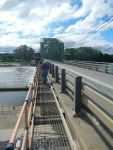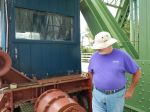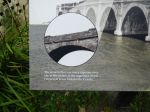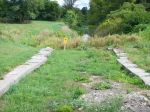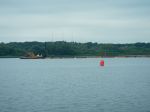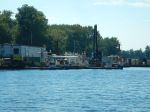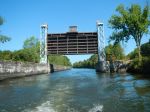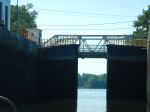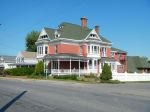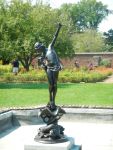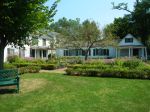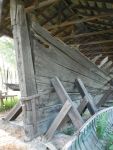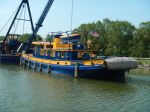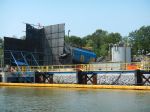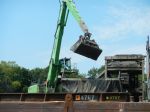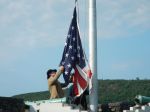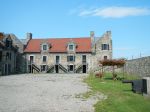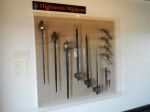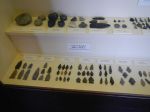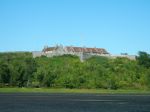We started the day with hot (thanks to the gas!), fresh coffee. Then it was time to make a lemon meringue pie.
We headed into the fort by dinghy about 9am. Arriving on the shore we were able to keep our feet dry and mud-free, pulling the dinghy up on an old tire on shore. We walked along the shore until we found the path to the stairs. Climbing the stairs, we arrived at the parking lot. The Fort was open at 9:30 with flag raising at 9:45. We took a brief look around and then joined the tour at 10:15.
This installation has an early history very similar to Crown Point. The indigenous peoples used this point for centuries. When the Europeans first came to the area it became a trading post and a desirable place to control. The French built a fort here which they destroyed instead of giving it up to the British. The British built a new fort which they failed to destroy when the Colonists captured it because Ethan Allan was able to sneak in in the early hours of morning and take it by surprise. Once the colonists won the Revolution, it fell into disrepair. As the area continued to be an important commercial spot being at the junction of several trade routes, the local population kept growing. Being in need of building material, they used what they could from the fort.
Here the history of the site diverges from all the other ones we have visited. After passing through several owners, it was sold to a NY merchant William Ferris Pell in 1820. He attempted to stop the pilfering and in 1909 the family started restoration efforts. Unlike Crown Point, various builds have been restored based on the ideas of the times so 1 barracks was done with the information and technology of 1909 while the most recently restored building was finished in 2008.
Various members of the Pell family were instrumental in the restoration efforts for over a century. In 1931 they formed the Fort Ticonderoga Association which ensure the preservation of the site into the future. Thus is has been in private hands for more than a century. As the association seems to be doing an excellent job of preserving the various parts of this complex site and making it accessible to the public, we hope this arrangement continues for a long time.
After we visited all the areas of the fort proper, we walked down to the King’s Garden. Here we found the old Pell family summer home in poor repair. Adjacent to it is a formal garden which the association tries to plant as it was in Sarah Pell’s time. The center piece of this garden is a fountain with a statue of “young Diana”. Legend has it that an 18 year old Betty Davis was the model for this. Outside the walls of this formal garden is the garrison garden modeled on what the troops would have grown to agreement their rations. It is said that there was no scurry at this fort because they were able to grow their own vegetables and fruit.
Returning to Conepatus, we stowed the dinghy, prepared cold drinks, and got underway. The south wind was blowing 15 or more and we didn’t want to spent the night here. Less than a mile south we stopped at Buoy 39 Marina which one of the members of the R-246 group had told us about. They are on the Vermont side ad have ethanol-free gas at a good price. After topping off, we continued south. This end of Lake Champlain gets quite narrow and has lots of lovely wetland areas. It was passed 5 PM and the birding was wonderful!! We saw numerous great blue herons, kingfishers, bald eagles, wood ducks, American black ducks, mallards, great white egrets, and more. There was also a muskrat and a grey squirrel swimming across the canal. This panorama continued until we pulled into the vicinity of Whitehall.
Whitehall is the reputed birthplace of the US Navy. A small fleet of ships were built here which were part of Benedict Arnold’s fleet in the Battle of Valcour in October of 1776. Although Arnold lost this battle, it prevented the British from continuing south that year giving the colonists another winter to get organized.
Whitehall is also the northern end of the Champlain Canal. The NY Canal system is run as a commercial barge system. All the locks are on VHF 13 and are still operating 7AM to 11 PM through Labor Day weekend. Also the locks themselves are larger that the Rideau and Trent-Severn. We locked up by ourselves and tied to the Whitehall Terminal Wall where there is water and electric for up to 8 boats with space for more. The town is small, friendly, and pleasant but like several others we’ve visited, it’s hay-day is long gone. It was a jumping place when the hydro power was important for a saw mill and grist mill and it was an important stop on a transportation line.

















